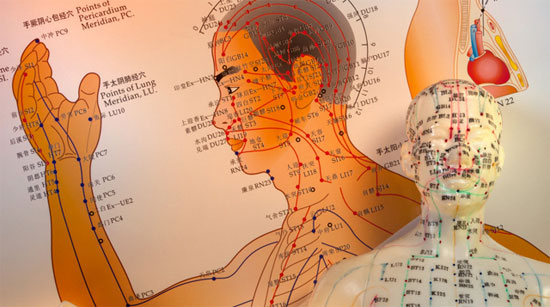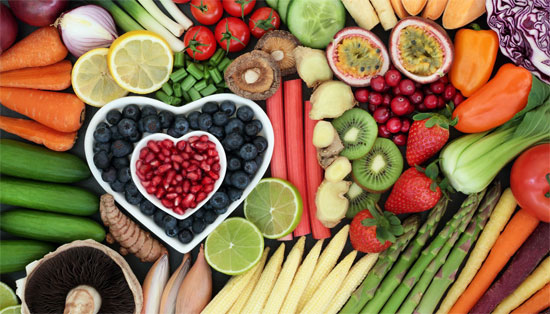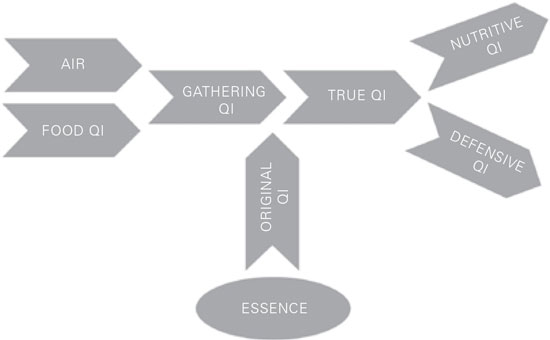Inner Alchemy: A Guide to the Teachings of Taoist Philosophy on Health and Higher Consciousness (2)
Read the first part of the article
QI: ENERGY
Moving up in refinement from the denser essence, we have our second treasure, which is our energy. This primary Taoist belief and concept can be likened to all the metabolic and physiological processes in the body that are constantly running. This qi energy is the currency of life. It is always moving and in flux. It is traveling through an energetic matrix or network of channels throughout the body, called the meridians. The Taoist masters knew about these pathways of energy flow for thousands of years; in fact, these pathways are the basis for the practice of acupuncture.

Taking the example of the candle, the energy is the flame; it is what sets things in motion. An unlit candle can be considered potential energy, but it takes that spark of life to get things moving and really make a candle fulfill its purpose, which, in this case, would be to light up a room. Our energy works in very much the same way. It is the life force that comes into a fertilized embryo (once spirit is imbued with matter) that really gets the show on the road; that same energy carries us through our adult lives, helping to fulfill our purpose.
Based on Taoist history, the ancient Taoist masters spent countless hours meditating, cultivating, and studying these phenomena. From them, we have come to understand that there are several types or qualities of this energy to speak of.
Original Qi
This form of energy is essentially the energetic equivalent of essence. It is essence transformed into energy. Being a dynamic and rarified form of primary essence, it is essentially the foundation of all the YIN and YANG energies of the body. The original qi serves many purposes in the body; it is almost like a fire starter. When other forms of energy are incorporated into the system, it is this original qi that “activates” them and sets things in motion. In turn, this energy is constantly nourished and replenished by the other sources of energy, which we are about to discuss. This original qi is housed in the “gate of vitality,” between the two kidneys, and becomes a very important and active agent in our practice of Qi Gong.
Food Qi
As the name suggests, food qi is the energy we derive from the food we eat. This is the essential first step to having healthy energy flow in the body, and it stresses the importance of having a clean and healthy diet. This is where the stomach receives and the spleen (and the pancreas) transforms our food into a usable form of energy, which it then raises up to the lungs to mix with air.

Gathering Qi
This form of energy, which is housed in the chest, is derived from the food qi mixing with air. Once the raw ingredients from ingested food are assimilated, they need to mix with air to form gathering qi. This idea really stands as a testament to the genius of the ancient Chinese Taoists. In modern biochemistry, we know that in part of the Krebs cycle, there is an amazing symbiotic relationship with a part of our cells called mitochondria that creates what we call the electron transport chain. Essentially, the mitochondria are part of an energy accelerator in our cells that allows us to use oxygen in a very dynamic process to help extract amazing amounts of energy out of simple sugars.
Prior to Taoist philosophy, it was thought that all life on this planet worked anaerobically (without the use of oxygen); the evolution of this cycle enabled eukaryotic cells (of which we mainly consist) to develop efficient energy-extraction systems. This was told to be the beginning of the evolutionary pathway to more elaborate and complicated multicellular structures, of which we are the end result (as many would argue). Although the ancient Taoists did not speak in this language, they could literally see how these energetic currents moved through the human body; they developed a complicated and very accurate model to describe it.
This gathering qi serves to nourish the heart and lungs; it also flows downward to aid the kidneys. It is just as important as the energy we derive from food, and it becomes the emphasis of much of our qi gong, or energy work. The cultivation of energy and healthy oxygenation of the system are intricately tied to one another.
True Qi
True qi is the form of energy that is the end product of the aforementioned processes. When the gathering qi is formed, it is activated by the original qi (which we called the fire starter); from this interaction, true qi results. True qi is the undifferentiated form of energy in the body that then branches off to perform the various functions required by the system. Per Taoist beliefs, this energy takes on two forms in the body: the nutritive qi and the defensive qi.
Nutritive qi: This is the type of energy that circulates internally and nourishes all the internal organs. It is closely related with the blood and, in fact, flows with the blood to bring energy to all the systems of the body. There is nothing in the body that does not interface with this form of energy, as it is the main “currency” of internal nourishment. Think of the true qi as the total revenues a country gets from taxes (food, air, water, and essence). In this example, nutritive qi would be the domestic spending on cities, bridges, infrastructure, hospitals, and so forth. It is designed to nourish the interior.
Defensive qi: If the nutritive qi is the domestic spending, then this form of energy is the armed forces and border patrol. It protects the exterior from pathogenic invasion and regulates body temperature by controlling the opening and closing of pores on the skin. It is truly the gatekeeper to the body and needs to remain charged and healthy in order to keep us protected. In fact, at any given time, we are surrounded by billions of hostile microorganisms that would quickly invade and devastate our system if it were not for this form of energy. Defensive qi regulates immunity through the skin and mucous membranes and is itself regulated by the lungs, while also being supported by the essence and original qi. It sounds complicated, but it really isn’t so.
This basic system, illustrated in Figure 3, very adequately explains the flow of how the body’s energies develop and are maintained. It also paints a picture of the complexity of the process. It is almost impossible to routinely eat terrible foods and successfully practice energy cultivation, because the food qi sits at the foundation of this entire process. It is also important to note that this system of interrelated energies is very much like an ecosystem that needs to be maintained. A weak defensive qi will either come from a weak true qi level or, if it has simply weakened through continual assault, will eventually drain the true qi, which backs it up at the expense of the nutritive qi.

Figure 3. The Creation of Qi in the Body
Let’s take this example on the macro scale. We have a whole host of problems in a country that can no longer pay for domestic programs (nutritive qi) because of a long expensive war (defensive qi) that is draining resources (true qi). Combine that with a faltering economy (low gathering qi) with a smaller tax base, and we suddenly get hit by both sides and have crises on our hands. Sound familiar? As above, so below.
SHEN: SPIRIT
The last of the three treasures of Taoism is the one most people in the West are fascinated by – the realm of spirit. It is the “paradise” to which we run in the West. So, it is really important to broach this subject correctly because we’re walking into very debated territory.
We live in a culture (Western Judeo-Christian-Islamic) of thinking that lives in a paradigm outside of the Garden. Recall that, according to the religious teachings we were indoctrinated with, we were ejected somehow (or so says our Creation myth), and we have to behave and do as told in order to earn the rights to be allowed back into heaven – “heaven” being an off-planet realm where God and all of his angels sit and watch us from “above.” We have bought into a storyline that pegs us as pathetic, materialistic sinners who are essentially wretches in need of salvation. We have to petition for divinity to intervene and “save” us from our evil human nature, which is obviously despicable, as we were taught by our priests.
Let’s carefully tiptoe through this theory, because that is not how Taoists see it. Actually, there are billions of other people on this planet who see it differently, and they seem happier than us.
The Taoist concept of spirit does not exist within some far-off realm in the clouds. On the contrary, it is right here and right now. Remember, Tao differentiated into YIN and YANG – therefore, matter is nothing without spirit. They are complementary, opposite views of the same life. When we cultivate shen (which is also translated as “consciousness”) in our Taoist practice, we only do so by holding the critical anchor of jing and the smooth flow of qi intact. Stated another way, we cultivate the essence in the body and make it robust with life and vitality; then we use this efficiency and “excess” of energy to refine spirit further and further. This means developing a deeper and deeper understanding of reality right here and now. The more we potentiate our essence, the more we can see the universe for what it really is. Like a mighty oak tree that sends its taproots deeper and deeper into the ground, we can use these amazing bioelectric “generators” of energy that we call our bodies to literally “turn on the light” and wake up.

When the Buddha was asked what enlightenment felt like, he simply stated that he “woke up.” Now, if you’re reading this, chances are you’ve already had a number of moments where you too “woke up.” Sometimes that “awakening” is even sustained for a longer period, but the sleepy state of ignorance keeps creeping back in, like some kind of force sinking us back to the lull of a sleepy zombie. In this practice, we carefully cultivate the essence and refine the spirit to stay awake and live in that state perpetually. Our practice of taking the “lead” of our personal experience and transmuting and sublimating it into the “gold” of spiritual awakening is the key to this essential teaching of Taoism. This metaphor applies to the Great Work in two ways:
1. It implies that we are to take our dense and powerful stores of essence and refine them into pure undifferentiated shen. This does not mean using it like a tank of gas and burning it away; instead, it connotes fusing it with spirit by bringing YIN and YANG together. We need to wake up our eternal nature in every atom of our body and impregnate our material base with its spiritual counterpart so we may unlock incredible reserves of energy to wake up and shine.
2. The lead-to-gold metaphor is also applied to taking the “lead” of the unresolved energies in our shadow and releasing it. It involves bringing the “skeletons” out of our “closets” and making things right in our lives. Once we release these hidden things, we’ll have opened up room for the Source energy to flow freely through us again. This is the other side of the practice where we must, with our newfound energy released from our qi gong, apply the light of conscious awareness to the blind spots in our shadow.
The refinement of essence into spirit unleashes a tremendous amount of energy, which will eventually be fed into our shadow if we remain mindless. This will then rapidly highlight and magnify all the problems we are having in our lives because they will now have so much more to feed upon. Therefore, in Taoist belief systems, it is critical to practice both sides of this equation. The energy work gives us more power to apply to waking up, but only if we stay focused on doing so!
In the next section, we are going to study the concept of the five elements in Taoist thinking. These are the “flavors” through which reality emanates once movement begins with YIN and YANG. However, it is important to relay another fine point about the concept of shen before we do so. The five elements differentiate the shen into five aspects (remember that all material manifestations will naturally mirror a spiritual quality). The five aspects of spirit are:
1. Fire (shen): The central notion of what we would consider spirit here in the West, fire is the house of the attention where the mind-spirit focuses its gaze. It is also the seat of compassion and love, which are the energies that intimately connect us with all life. It is housed in the heart.
2. Earth (yi): This is the concept of the intellect – the mind and its powerful facility for concentration. It is also our ability to “digest” concepts and ideas. It is housed in the spleen.
3. Water (zhi): This is the will or intention – the driving force of our manifestation of inner wishes and our ability to transform these desires into tangible reality. It is housed in the kidneys.
4. Wood (hun): This is the house of the “ethereal soul,” which is the aspect of our consciousness that helps reconcile the interface between the heart’s desires and the physical reality that surrounds us. This is largely the aspect of us that is involved in astral travel, and it does a good deal of problem solving while we are asleep. It is housed in the liver.
5. Metal (Po): This is the house of the “corporeal soul,” which is the aspect of our soul that connects us more to the body and its lessons. Metal represents the energy of decline and the season of fall. Fall is when things return to the earth and get mulched; thus, this aspect of the soul deals with grief and letting go. It is housed in the lungs.
So, the shen or spirit, like all other things in Tao philosophy, has flavors to it. In this case, it is differentiated along the spectrum of the five elements.
Read the third part of the article
yogaesoteric
April 13, 2020
